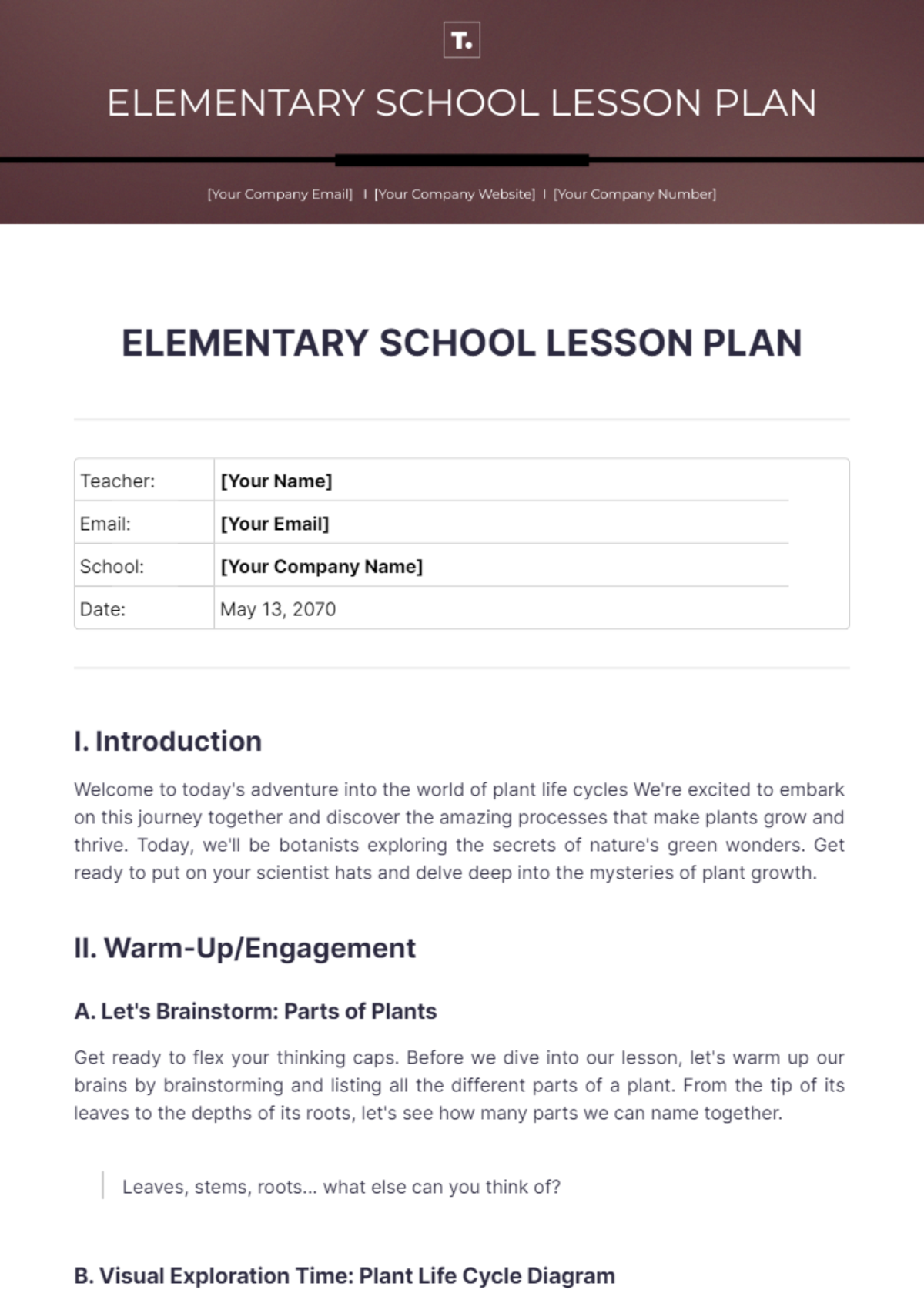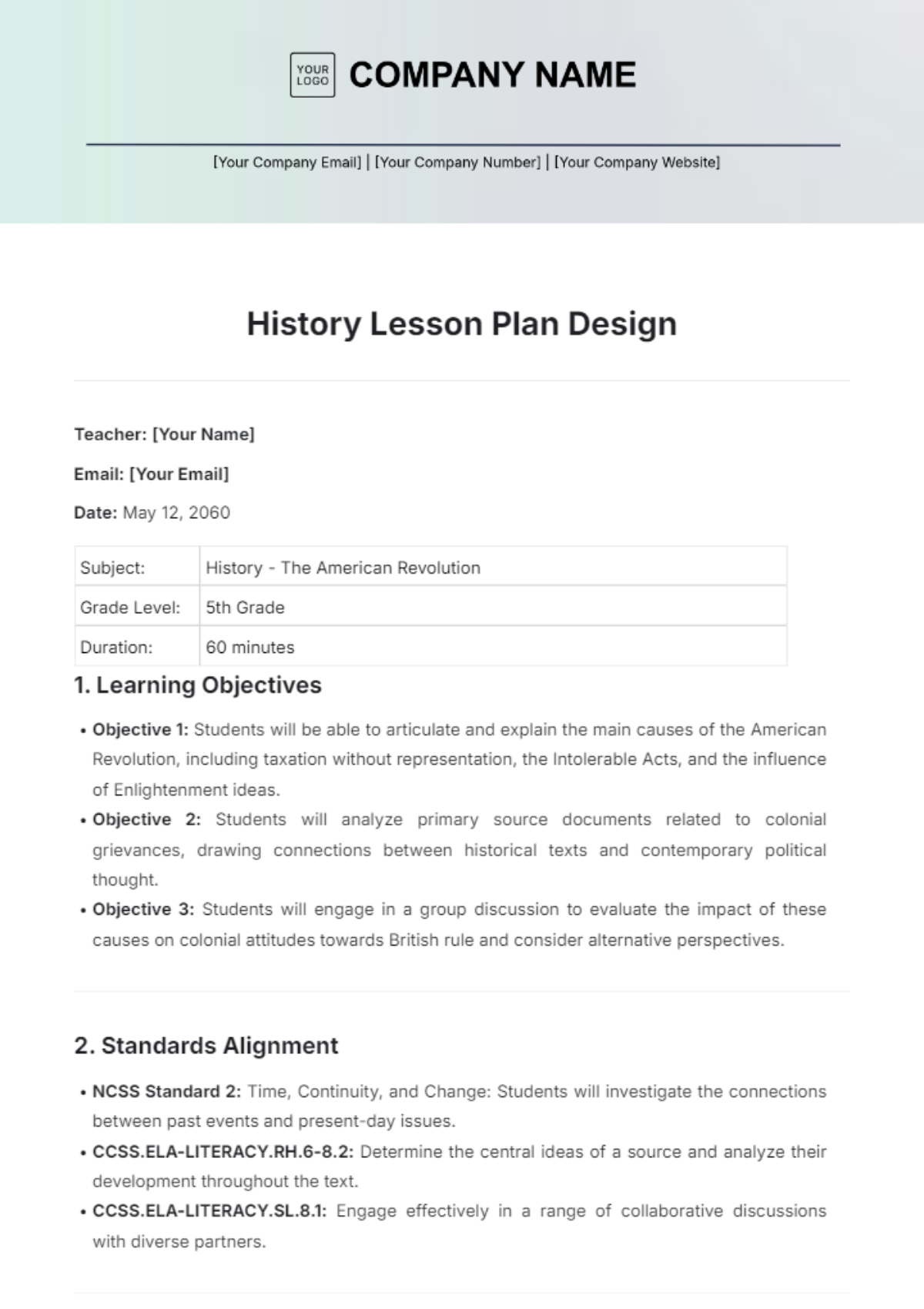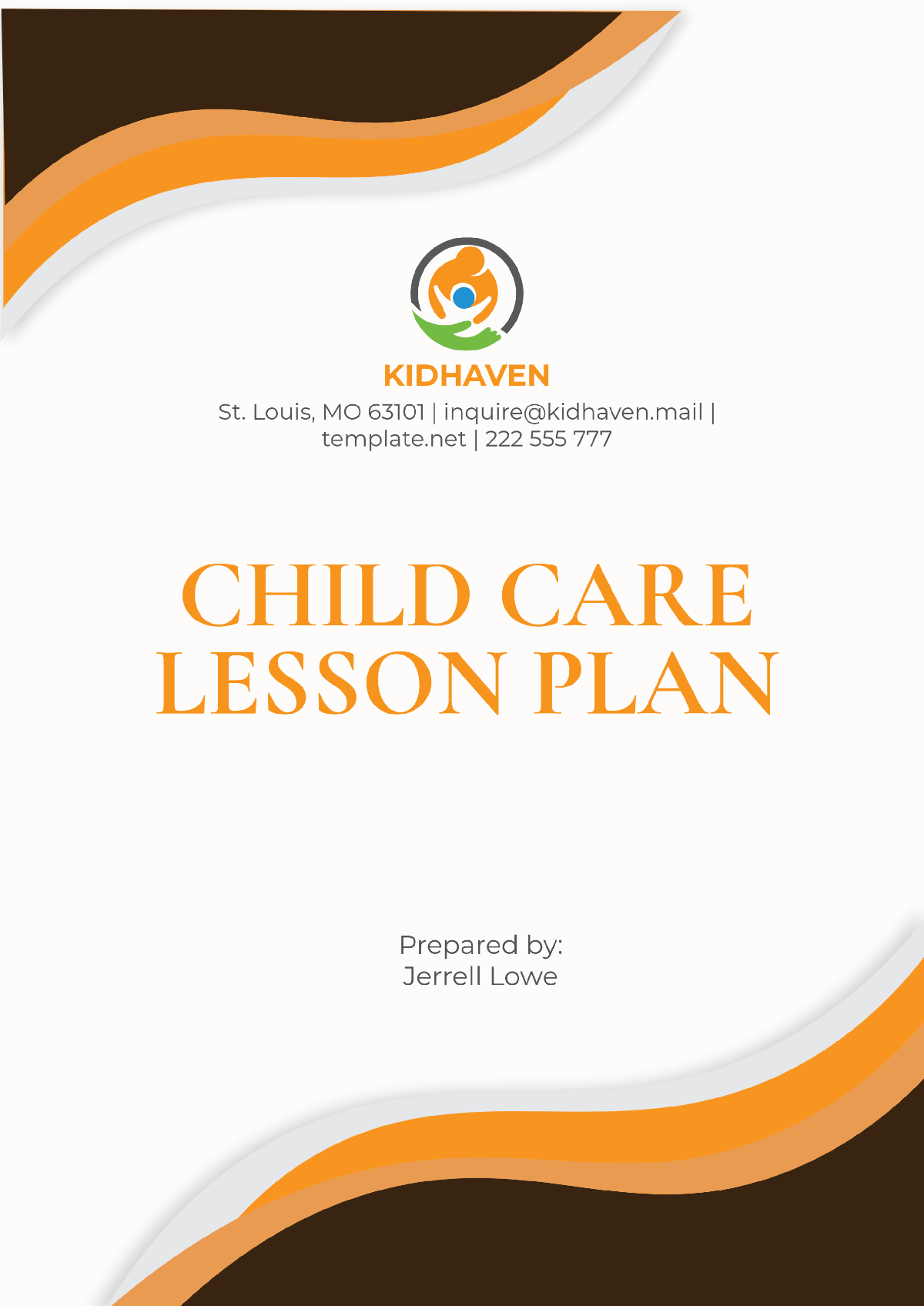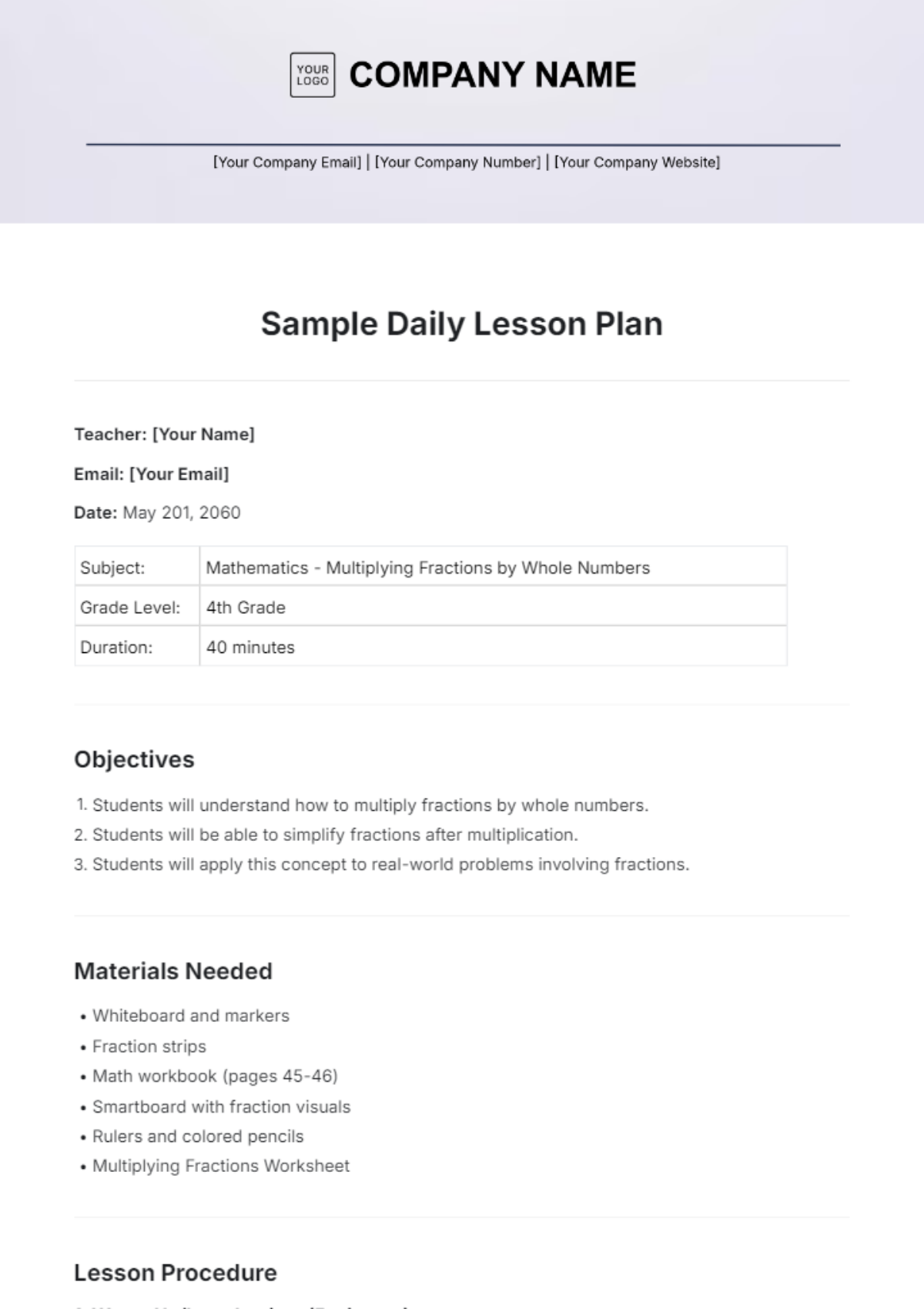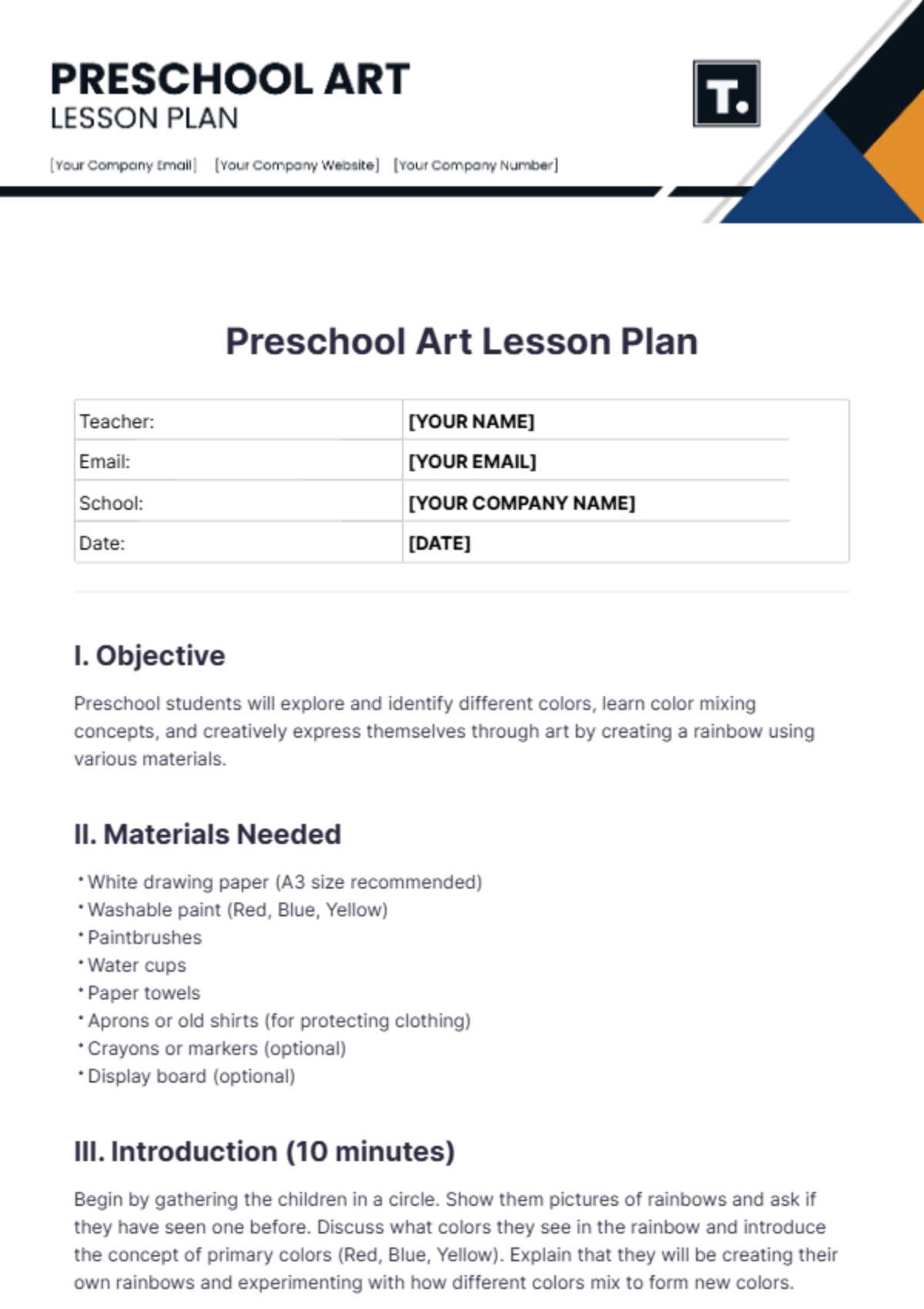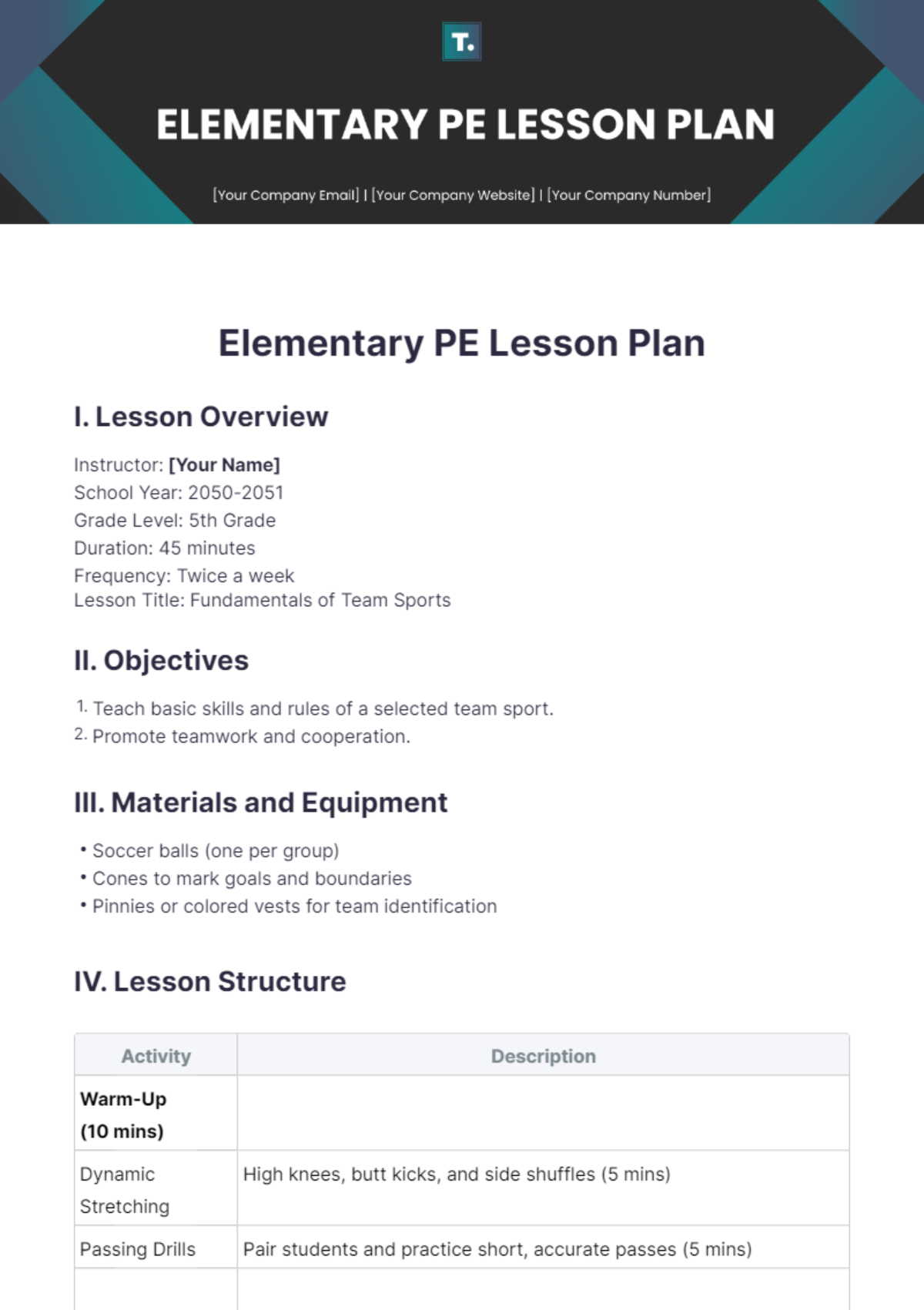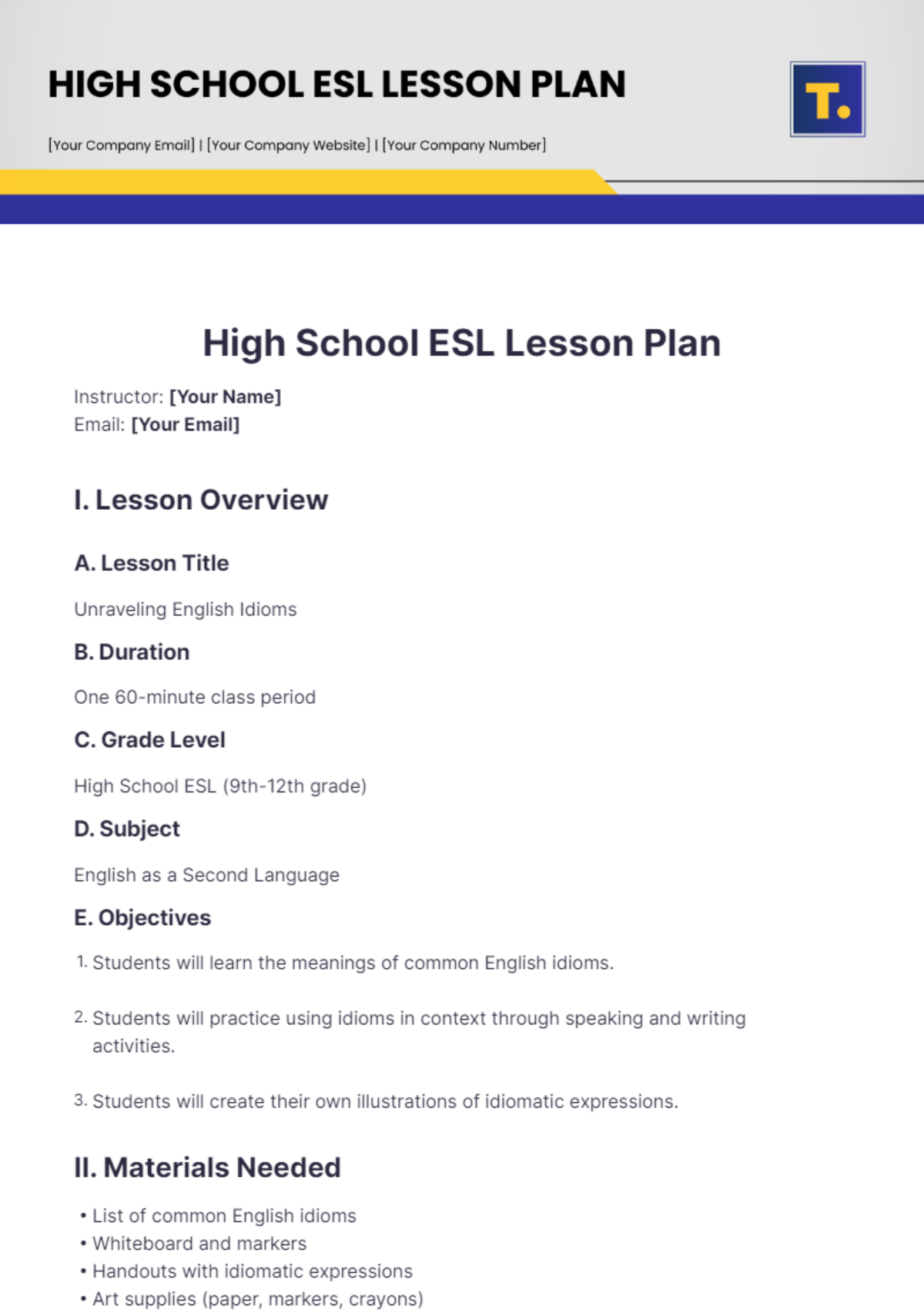Lesson Plan
Teacher: [Your Name]
Email: [Your Email]
Date: May 22, 2060
Subject: | Science - The Water Cycle: Understanding How Water Moves Through Our Environment |
Grade Level: | 5th Grade |
Duration: | 60 minutes |
Lesson Overview
In this lesson, students will explore the water cycle's stages: evaporation, condensation, precipitation, and collection. Through interactive discussions, multimedia presentations, and hands-on activities, they will gain a deeper understanding of how water circulates through the environment and its vital role in weather patterns and ecosystems.
Objectives
By the end of the lesson, students will be able to:
Identify and describe the four main stages of the water cycle.
Explain the relationship between the water cycle and weather patterns.
Create a visual representation of the water cycle and summarize their observations from the experiment.
Materials Needed
Whiteboard and markers
Projector and computer for presentation slides
Water cycle diagram handouts (one per student)
Clear plastic cups (1 per student)
Hot water (approximately 1 cup per student)
Ice cubes (5-6 cubes per student)
Small plastic or paper towels (1 per student)
Markers, crayons, and colored pencils
Science journals (one per student)
Optional: Internet access for additional research (for advanced learners)
Standards Addressed
Next Generation Science Standards (NGSS):
5-ESS2-1: Develop a model to describe the movement of water through the Earth’s system.
5-ESS2-2: Describe and graph the amounts of salt and fresh water in various reservoirs to provide evidence about the distribution of water on Earth.
Introduction (10 minutes)
Engage: Start with an open-ended question: "Where does rain come from?" Allow students to share their thoughts and experiences.
Connect: Discuss how weather affects their daily lives (e.g., planning outdoor activities, and understanding local weather forecasts).
Purpose: Introduce the concept of the water cycle and explain its significance in maintaining life on Earth. Highlight how the water cycle contributes to weather patterns and the environment.
Direct Instruction (15 minutes)
Present: Use a PowerPoint presentation to introduce the stages of the water cycle:
Evaporation: Explain how heat from the sun transforms water from oceans, rivers, and lakes into vapor. Use images of the sun and water bodies to illustrate this process.
Condensation: Discuss how water vapor cools and forms clouds. Show animations of clouds forming and expanding in the atmosphere.
Precipitation: Describe how water falls back to Earth as rain, snow, sleet, or hail. Use real-life examples and visuals of different types of precipitation.
Collection: Explain how water gathers in bodies of water (lakes, rivers, and oceans) and how it starts the cycle anew. Discuss the concept of water reservoirs.
Visual Aid: Display a colorful diagram of the water cycle and label each stage during the presentation to reinforce understanding.
Guided Practice (15 minutes)
Collaborative Learning: Distribute the water cycle diagram handouts.
Labeling Activity: Work together as a class to label each stage, discussing the processes involved in each. Ask students to volunteer to come up and write on the board.
Questioning: Pose questions to encourage critical thinking:
"What happens to water in the winter compared to the summer?"
"How do clouds affect our weather?"
Real-Life Connections: Discuss how the water cycle affects local weather patterns and agriculture. Ask students how rain influences their daily lives and activities.
Independent Practice (15 minutes)
Mini-Experiment:
Each student fills a clear plastic cup halfway with hot water, covering it with a small paper towel.
Students place 5-6 ice cubes on the towel to simulate the cooling effect.
Observation: As students watch, condensation will begin to form on the towel's underside, mimicking the water cycle's condensation stage.
Journaling:
Students will sketch their observations in their science journals and write a summary explaining the experiment's relevance to the water cycle. Please encourage them to label their diagrams and use color.
Prompt them to answer questions such as:
"What did you observe happening to the water in the cup?"
"How does this relate to what you learned about condensation?"
Closure (5 minutes)
Recap: Gather students to summarize the key points of the lesson. Ask each student to share one thing they learned or found interesting.
Discussion: Prompt students to reflect on the importance of the water cycle in everyday life and its impact on the environment. Discuss how humans can affect the water cycle (e.g., pollution, climate change).
Preview: Briefly introduce the next lesson topic related to climate and weather patterns influenced by the water cycle, such as how seasons affect the water cycle.
Assessment
Formative Assessment: Monitor student engagement during discussions and the labeling activity. Use a checklist to track participation and understanding.
Journals: Evaluate the sketches and written summaries in their journals for understanding and clarity. Look for the accuracy of labeled diagrams and the relevance of observations.
Follow-Up Quiz: Administer a quiz in the next class to assess the retention of key concepts, including definitions and stages of the water cycle.
Differentiation
For Advanced Learners: Encourage research on human impact on the water cycle and how climate change may alter these processes. Provide resources for students to create a presentation on their findings.
For Struggling Learners: Provide simplified diagrams and additional visual aids. Pair them with peers during group activities for support. Offer guided questions to help them during the independent practice.
Reflection
After the lesson, reflect on student participation and understanding.
Note what teaching strategies were effective and identify areas for improvement.
Consider student feedback and adjust future lessons based on their responses, especially regarding the hands-on activity.

